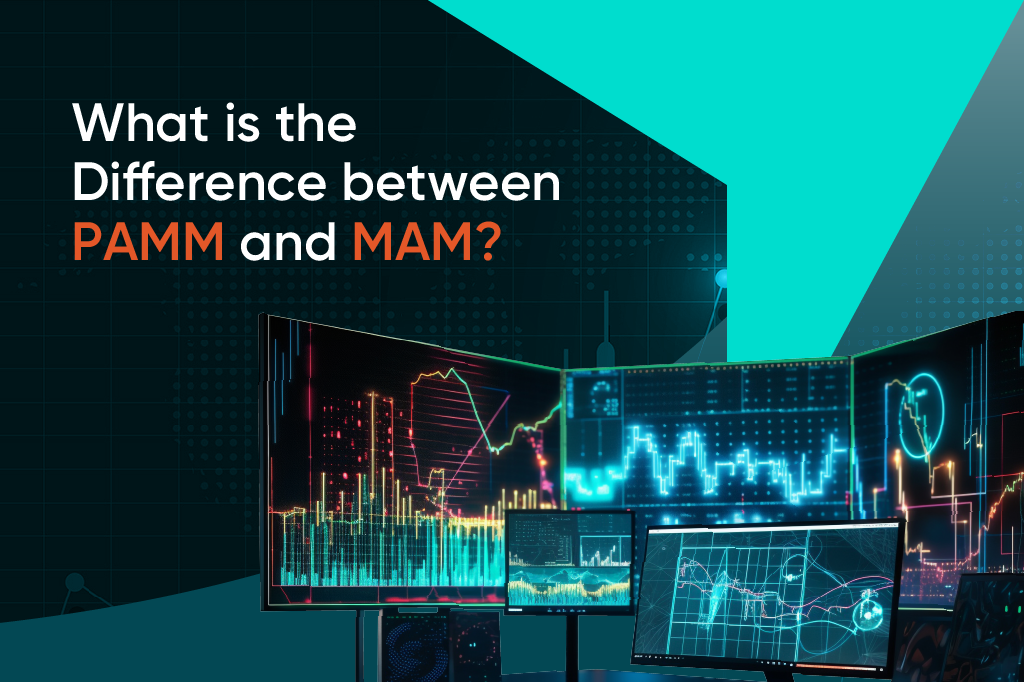
In the financial investment landscape, two prominent money management solutions have emerged: Percentage Allocation Management Module (PAMM) and Multi-Account Manager (MAM). Both options cater to the unique needs of investors and traders.
Continue reading to discover the key differences between PAMM and MAM.
What is PAMM
PAMM is a fund management solution in which an expert fund manager can be selected to oversee funds from multiple investors collectively. With this solution, the fund manager utilizes the combined pool of capital for trading.
The returns and losses generated from these trades are subsequently distributed among the investors in proportion to their respective contributions.
Advantages of PAMM account
The arrangement of a PAMM account can be advantageous to beginner investors, as it permits them to tap into the insights and strategies of a seasoned fund manager without having to make any of the trading decisions themselves. Additionally, PAMM fund management allows investors with smaller funds to benefit from large-scale trades and provides them with an avenue to diversify their investment portfolio.
Furthermore, the transparency that is available in PAMM accounts ensures that investors are always well-informed about the performance of their chosen manager. Fund manager performance fees are clearly stated upfront, and this arrangement empowers investors with the flexibility to withdraw their funds whenever they deem it necessary. The transparency of PAMM accounts also enables investors to monitor the performance and trading history of the fund managers before selecting them.
What is MAM
The Multi-Account Manager (MAM) money management system, as the name suggests, is all about a fund manager handling multiple individual accounts for investors.
This is different from the PAMM pooled approach. With MAM accounts, fund managers can efficiently manage multiple sub-accounts using just one master account. Multi-Account Managers earn commissions from their clients’ trades, along with performance and management fees as their rewards.
Advantages of MAM account
MAM accounts provide investors with a professionally managed trading experience, allowing them to leverage the knowledge and expertise of seasoned traders. This is particularly beneficial for those who may lack the time or expertise to navigate the intricacies of trading. With a MAM account, managers can execute trades for multiple clients simultaneously, reducing errors and increasing efficiency.
Moreover, MAM accounts offer exceptional flexibility to both traders and investors. Investors can monitor their sub-accounts in real-time, while MAM account managers can adjust trading parameters to accommodate diverse needs. In addition to flexibility, MAM accounts emphasize diversification and cost-efficiency. Investors can allocate their investments across various sub-accounts, helping to spread risk and potentially mitigate the impact of any losses.
What is the difference between PAMM and MAM?
PAMM and MAM, at first glance, might seem like two similar money management solutions with slight variations. Both facilitate the management of funds by expert traders on behalf of multiple investors. One of the primary differences is their account structure and management approach.
Here’s a table summarising some of the difference between PAMM and MAM to help you understand better:
| PAMM | MAM | |
| Definition | A trading platform where expert traders manage pooled funds from multiple investors. | A platform where expert traders manage several individual accounts based on each investor’s preferences, risk tolerance, and strategic goals. |
| Account Structure | Pooled funds from all investors, creating a collective trading pool managed by a fund manager. | Multiple sub accounts, each with its unique strategy and leverage and managed by a fund manager using a master account. |
| Suitable For | Novice investors wanting to tap into experienced trader strategies without making direct trades on their own. | Investors that prefer to have individual trading strategies based on their financial goals and risk appetite. |
| Advantages | Leverage the expertise of seasoned traders. Engage in larger trades. Transparency and flexibility in fund management. | Unparalleled flexibility in account management. Trades reflect individual investor’s desires and risk appetite. Real-time performance tracking. |
| Transparency & Control | Investors can consistently monitor the performance and trading history of their chosen managers but can’t control their trades. | Investors have real-time performance tracking and are active stakeholders in their account management. |
Conclusion
PAMM and MAM are unique accounts that allow for pooling and management of multiple investors’ funds. Experience the advantages of Vantage’s MAM and PAMM accounts when you become a Vantage IB.
Both Vantage MAM and PAMM accounts provide top-notch trading tools and account management. They make it easy for fund managers to pool investments, handle multiple client funds, and set custom trading strategies.
Whether you’re an individual investor wanting more features or an expert trader ready to upgrade, Vantage’s MAM and PAMM accounts might be right for you. Reach out to discover more.
Disclaimer: Any information/content/material is intended for educational purposes whereas Vantage does not represent or warrant that the material provided here is accurate, current, or complete and cannot be held responsible for any miscalculation/mistake or omission. Any reliance on such information is strictly at your own risk. The information provided here, whether from a third party or not, is not to be considered as a recommendation; or an offer to buy or sell; or the solicitation of an offer to buy or sell any financial instruments; or to participate in any specific trading strategy and/or as investment advice. Any research provided does not have regard to the specific investment objectives, financial situation and needs of any specific person who may receive it. Please seek advice before making any trading decision. Past performance is not an indication of future performance. The information provided is not intended for distribution to, or use by, any person in any country where such distribution/use would be contrary to local laws.
